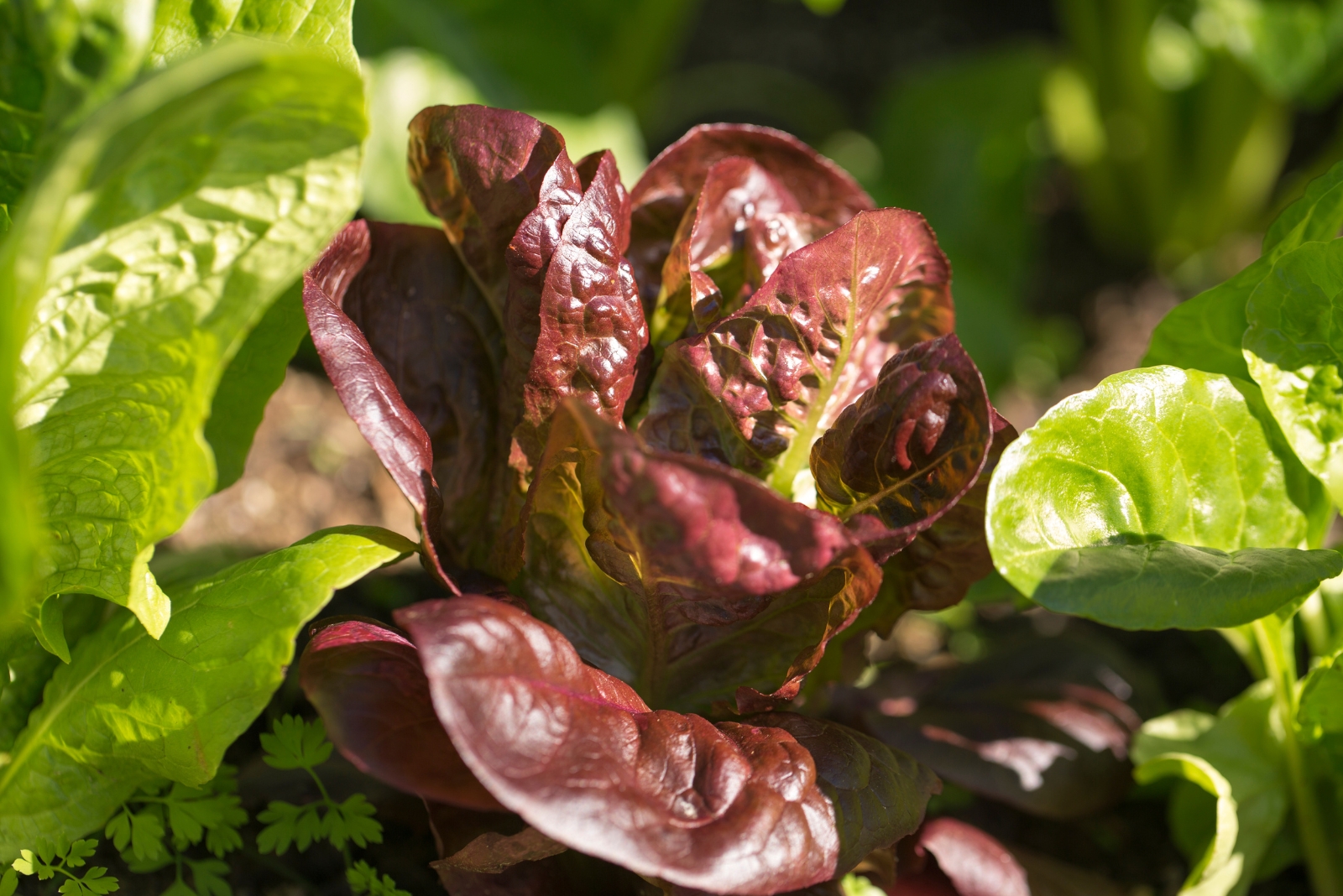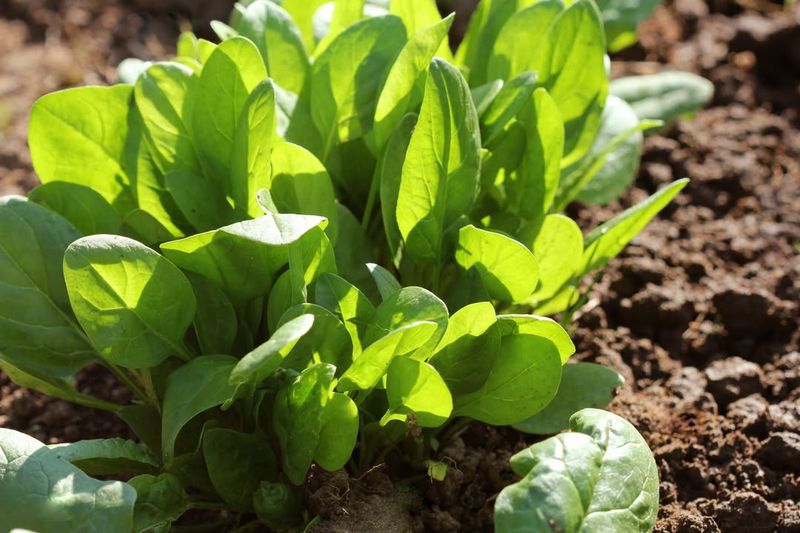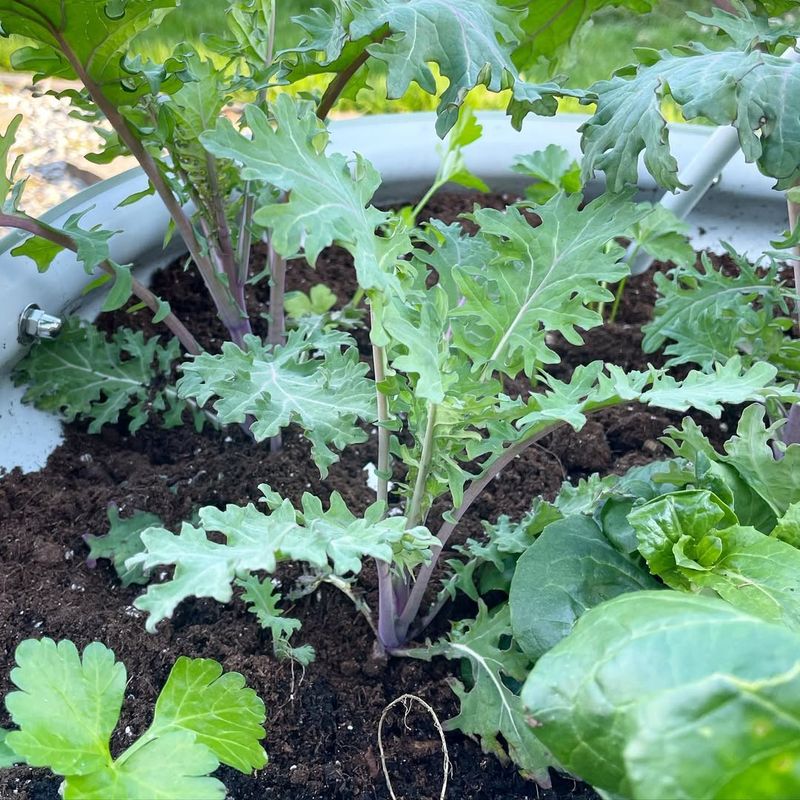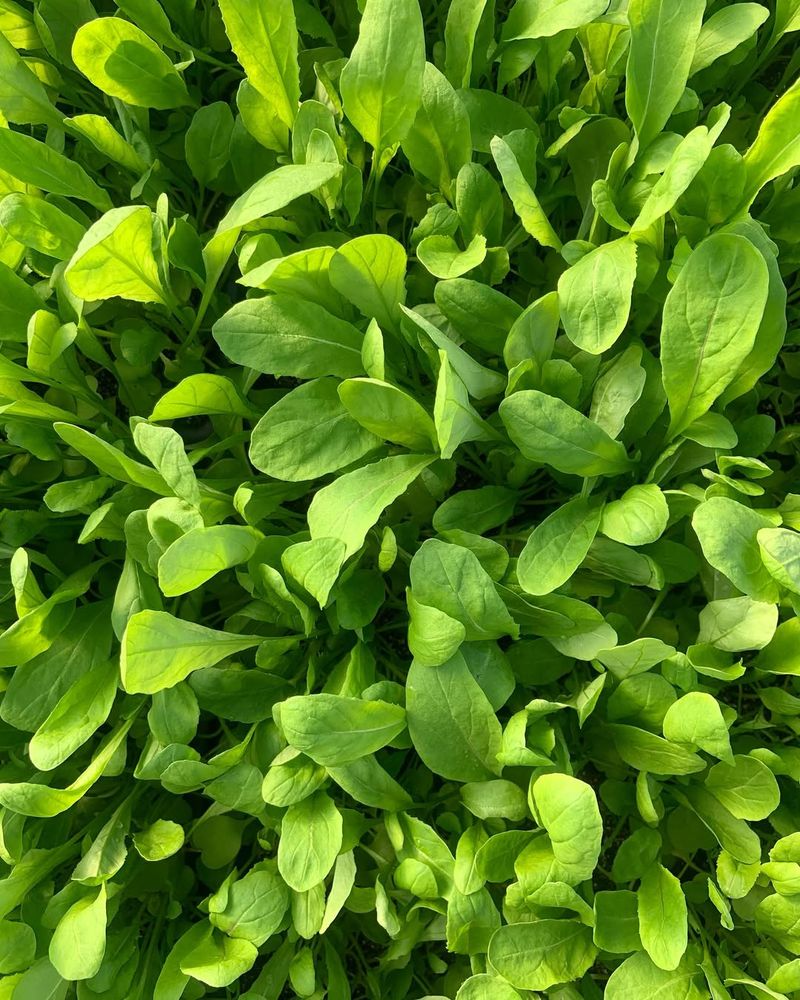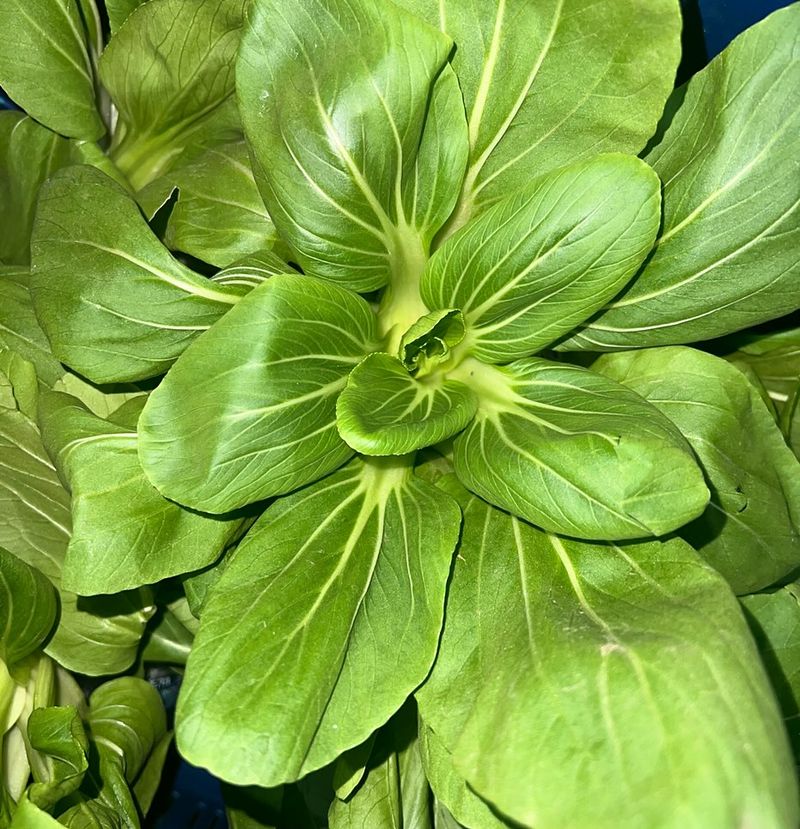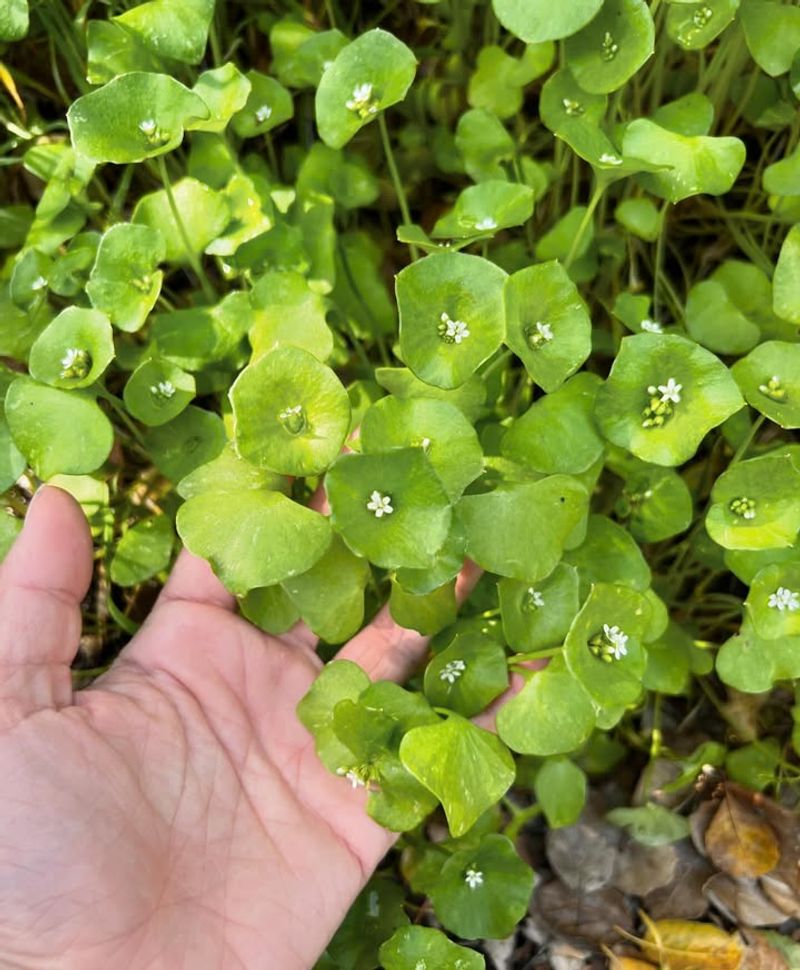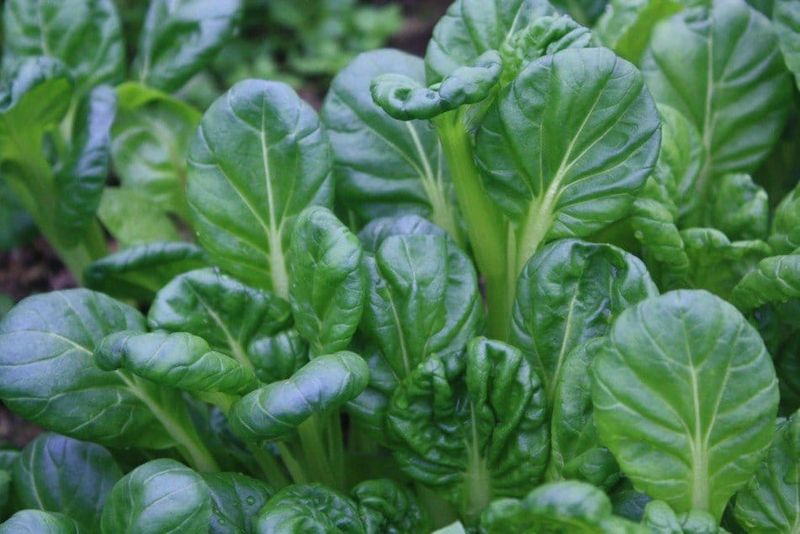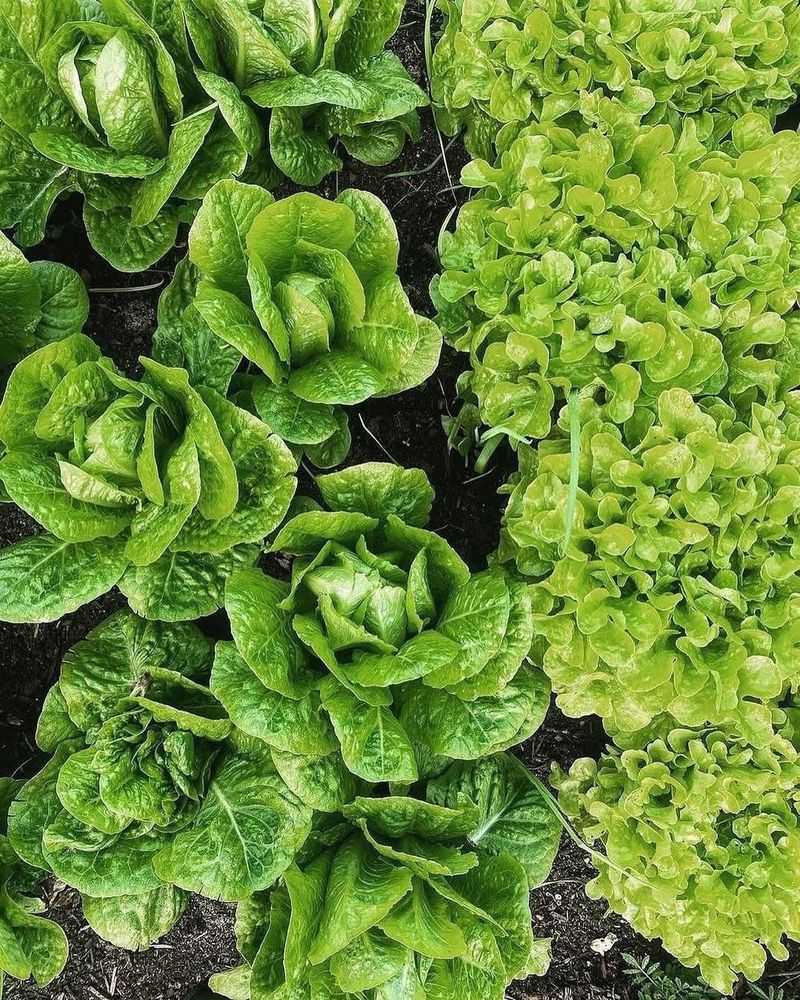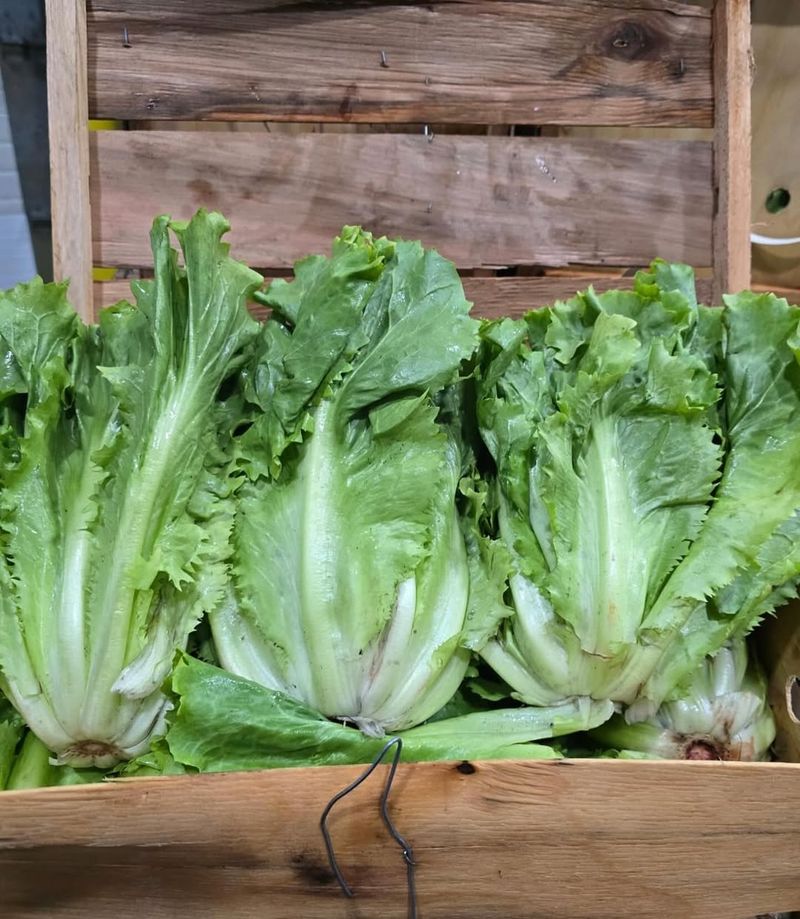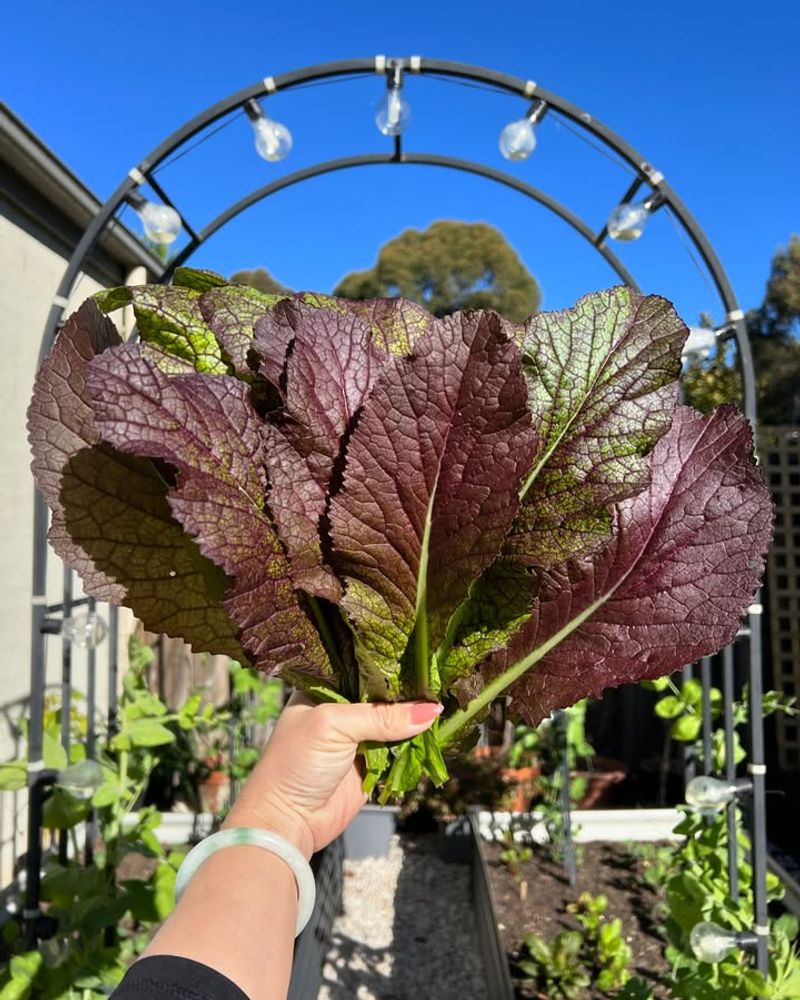Winter doesn’t mean your garden has to go dormant in North Carolina. Many leafy greens actually thrive in cooler temperatures, giving you fresh salads even when frost covers the ground.
Growing cold-hardy greens means you can enjoy homegrown vegetables all season long while most gardens sit empty.
1. Spinach
Cold weather actually makes spinach taste sweeter because the plant converts starches into sugars as a natural antifreeze. Plant it in early fall, and you’ll have tender leaves ready to pick throughout winter.
Spinach handles temperatures down to 15 degrees Fahrenheit without protection. The leaves grow slowly in cold weather but stay incredibly flavorful. Harvest outer leaves first, letting the center continue producing fresh growth for weeks of continuous salads.
2. Kale
With a reputation for being nearly indestructible, kale becomes surprisingly tender after a few hard frosts hit your garden. Temperatures below freezing break down tough fibers, creating leaves that are perfect for raw salads instead of just cooking.
Lacinato and curly varieties both perform excellently in North Carolina winters. Pick leaves from the bottom up, allowing the plant to keep growing taller. One planting can feed your family from November through March.
3. Arugula
Arugula brings a peppery kick to winter salads that mild lettuce simply cannot match. Seeds germinate quickly in cool North Carolina soil, and plants mature in just three to four weeks during fall planting.
This green actually prefers cold weather over summer heat, which makes it bolt and turn bitter. In winter, arugula stays mild and productive for months. Cut entire plants at soil level or harvest individual leaves as needed for continuous growth throughout the season.
4. Mache (Corn Salad)
Often called corn salad, mache forms adorable little rosettes that hug the ground and laugh at freezing temperatures. This European favorite survives winters that would kill most other greens without any cover whatsoever.
The buttery, nutty flavor makes mache a gourmet addition to mixed salad bowls. Plants grow slowly but steadily through winter months. Harvest whole rosettes or snip outer leaves, and you’ll enjoy this delicate green from December straight through early spring.
5. Claytonia (Miner’s Lettuce)
Gold rush miners once relied on this green for vitamin C during long winters, which explains its quirky common name. The unique round leaves with stems poking through their centers make claytonia instantly recognizable in any North Carolina garden bed.
Mild and slightly tangy, claytonia thrives in partial shade where other greens struggle. It self-seeds readily, coming back year after year without replanting. Cold weather keeps it producing tender leaves perfect for adding crunch and nutrition to winter meals.
6. Asian Greens (Mizuna, Tatsoi, Bok Choy)
Asian greens bring incredible variety to winter gardens with their different textures, shapes, and flavors. Mizuna offers feathery, mild leaves while tatsoi forms dark green spoons and bok choy provides crisp stems alongside tender leaves.
All three handle North Carolina winters beautifully, especially with light row cover during the coldest snaps. They grow faster than most winter greens, giving you harvestable leaves in just four weeks. Use them raw in salads or quickly sauté for warm dishes.
7. Winter Lettuce Varieties
Not all lettuce wilts at the first North Carolina frost. Specific varieties like Winter Density, Arctic King, and North Pole are bred to handle cold temperatures that would destroy regular lettuce types.
Plant these special varieties in late summer or early fall for winter harvests. They form tight heads or loose leaves depending on the type you choose. The flavor stays sweet and crisp even when temperatures drop below freezing, giving you classic salad greens throughout the coldest months.
8. Endive and Escarole
Slightly bitter and absolutely delicious, endive and escarole add sophisticated flavors to winter salad mixes. Endive features frilly, curled leaves while escarole grows in broader, flatter heads with pale yellow centers.
Both greens become milder and sweeter after exposure to frost, making them perfect for North Carolina winters. The bitter edge balances well with sweet dressings or fruits in salads. Harvest outer leaves continuously, or cut entire heads when they reach full size for impressive centerpiece salads.
9. Mustard Greens
Spicy, colorful, and incredibly tough, mustard greens practically beg for cold weather to show off their best qualities. Varieties range from mild to mouth-tingling hot, with leaf colors spanning green, red, and purple shades.
Cold North Carolina temperatures tame the spiciness just enough to make mustard greens perfect for fresh salads instead of only cooked dishes. They grow quickly and produce abundantly throughout winter. Young leaves work beautifully in salad mixes, while larger leaves still pack plenty of flavor.

